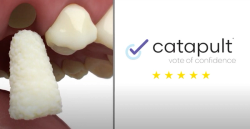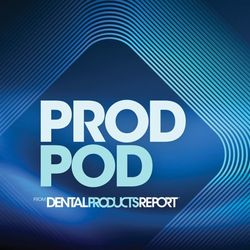- About Us
- Advertise
- Editorial
- Contact Us
- Terms and Conditions
- Privacy Policy
- Do Not Sell My Personal Information
© 2025 MJH Life Sciences™ and Dental Products Report. All rights reserved.
How to deliver same-day digital solutions
CAD/CAM Dentistry has evolved into a profitable resource for the dental office, especially for practices accepting of cutting-edge technology and converting to a digital dental platform.
CAD/CAM Dentistry has evolved into a profitable resource for the dental office, especially for practices accepting of cutting-edge technology and converting to a digital dental platform.
Intraoral cameras, digital X-rays, the Planmeca FIT Open CAD/CAM System and CBCT scans are the future. And the future is now.
The technology has arrived
The need to provide a custom digital restoration on the same day has come. Patients demand it and expect to have their dentistry done in the same visit-not to mention the ROI for the technology is there.
Technique: How to cooperatively fix a failed cosmetic case
Three to four full-coverage crowns can easily cover the monthly loan to purchase such equipment, and with 20-30 CAD/CAM crowns a month, it will pay for itself in short order. With that being said, let’s examine the typical workflow of when a patient comes in for a same-day restoration.
With the Planmeca FIT System, a tooth can be restored in one single visit, bypassing the need in traditional dental offices of the following:
1) A temporary on the prepared tooth (average material cost: $15-$25 per temporary)
2) Taking a hydrophilic vinyl polysiloxane or similar final impression material (average material cost: $15-$25 per impression)
3) The dental laboratory cost of $125-$350 per crown (depending on the material and the laboratory used)
4) Restorations that need to be remade, re-impressioned or sent back to the lab, etc.
Related reading: Planmeca introduces Planmeca FIT™ System
Continue reading on Page 2 ...
The above are just material costs. There are other factors that complicate this process as well, costing the dental office time and money. The following is a list of potential issues using CAD/CAM technology may help prevent:
1) Temporary crown fracturing off while case is at the lab: Crown needs to be remade (more money lost), and there is extended time in the chair with either the doctor or the assistant to fabricate a new one (time lost).
2) Crown comes back from the lab but does not fit the patient: Re-impression and return back to the lab.
3) Patient dissatisfaction with having to come back for the seating of final restoration: Also, if the final restoration does not fit, the increased displeasure of the patient in having to re-impress and then come back a third time for the final cementation.
Technique: Pouring better models with Wonderfill
All of the above costs the dental office time and money. Every time the patient is in the chair to re-impress, remake a temporary, etc., it takes away the original profit that was made to provide the service in the first place.
This presents a huge savings opportunity for the dentists who invest in digital technology.
Case study
Let’s see some practical cases that come into the office everyday:
Case 1: Patient presented in pain on tooth No. 15. Clinical examination showed fractured lingual cusp of tooth. The fracture extended 1.5 mm into the palatal gingiva and did not encroach on the tooth’s biological width nor did it reach the aveolar crest of bone.
Continue reading on Page 3 ...
A full-coverage crown treatment was planned and executed the same day. Patient was anesthetized and lingual cusp was removed.
Once prepared, the tooth was scanned with PlanScan scanner and designed with PlanCAD. The final restoration was milled out in the office with PlanMill 40 and seated in a single-visit, same-day procedure.
Case 2: Patient made an appointment for a routine hygiene visit. The recommended procedures included restoring teeth Nos. 4 and 5 due to fractures around previous restorations. The previous restorations were removed, and the lingual cusps were included in the design of the restoration. Prepared teeth shown.
Technique: How to choose the most suitable temporization approach
Many of the teeth that were previously diagnosed with needing a full-coverage crown could now be restored with a more conservative onlay preparation. With adhesive dentistry, and the precise fit of the Planmeca FIT fabricated CAD/CAM restoration, this conservative approach has a favorable outcome for the patient.
The final restorations were seated. The entire procedure, from start to finish, was completed in one dental visit.
In summary, the quick technique steps were as follows:
1. Prepare tooth for restoration.
2. Scan tooth, opposing arch and buccal bite with PlanScan.
3. Design restoration with PlanCAD.
4. Mill restoration out with PlanMill 40.
5. Seat the restoration.
Related reading: How to complete a direct restoration with VOCO's Futurabond U [VIDEO]
Conclusion
There are many benefits of same-day digital solutions for dental offices. Of the upmost importance is the convenience for the patient. Patients love not having to take additional time off of work or out of their busy lives to have a restoration seated. They are impressed with the new technology and amazed that all of their dental work can be completed in a little more than an hour. Patients will then refer their friends and family to your office after receiving such a great experience.
Click below to watch a video of this technique:
About the author
Dr. Mike Moroni was raised in Northern California. He attended California State University at Hayward, where he received his bachelor’s degree in biology. In 1997, he graduated with his doctorate in dentistry from Case Western Reserve University in Cleveland. Dr. Moroni then went on to complete his dental residency at the Cleveland Clinic. After a few years of immersing himself in the dental world, he decided to take his experience to Colorado where he opened his private practice. Dr. Moroni originally started using CAD/ CAM technology in 2007 and has since placed more than 4,000 CAD/CAM restorations. He has many professional affiliations and memberships, including the American Academy of Cosmetic Dentistry,American Dental Association, Colorado Dental Association and Metropolitan Denver Dental Society.
Related reading: How to directly fabricate provisionals with Amaris Gingiva from VOCO America



